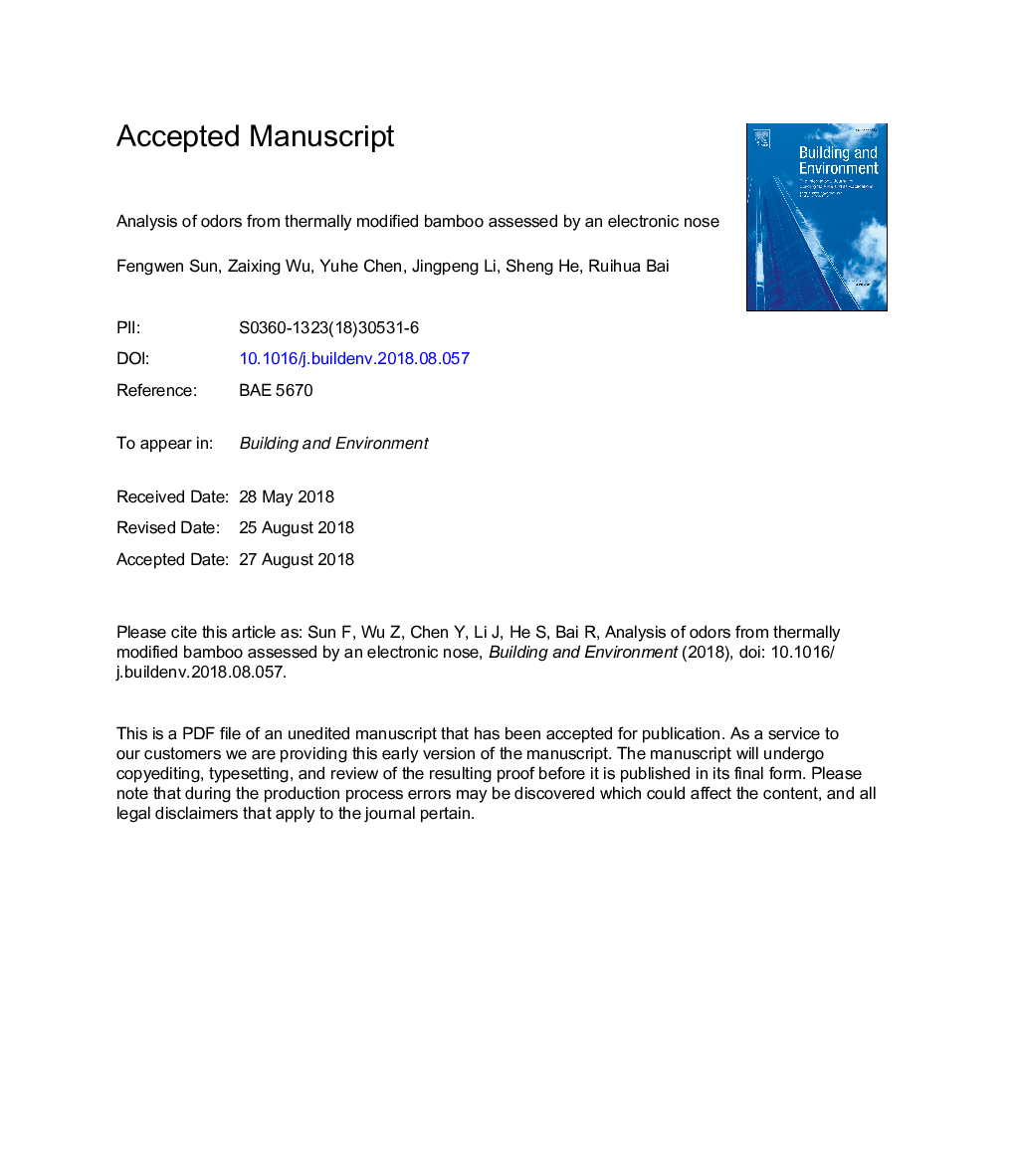| Article ID | Journal | Published Year | Pages | File Type |
|---|---|---|---|---|
| 11000960 | Building and Environment | 2018 | 20 Pages |
Abstract
Thermal treatment is an environmentally compatible method to modify bamboo to enhance its water repellency, dimensional stability, and durability. One of the side effects of thermal modification is a significant odor. In this study, a PEN 3.5 electronic nose (e-nose) equipped with 10 metal oxide sensors, was introduced to assess the odor emissions from untreated (control) and thermally modified moso bamboo. We used linear discriminant analysis (LDA) or factor analysis to analyze the odor data collected by the PEN 3.5 e-nose. The results imply that terpenes, aromatic compounds, methane and alcohols can distinguish thermally treated bamboo. The analyses indicate that the PEN 3.5 e-nose is an effective instrument to distinguish samples with different thermal modification conditions using LDA. Almost 92.2% of the variability in the original 10 variables could be explained by the three factors from factor analysis, the weighted average scores can be calculated after factor analysis as a further and easier indicator to assess odor as a whole. The scores were consistent with human evaluation, motivating future odor emission control work.
Keywords
Related Topics
Physical Sciences and Engineering
Energy
Renewable Energy, Sustainability and the Environment
Authors
Fengwen Sun, Zaixing Wu, Yuhe Chen, Jingpeng Li, Sheng He, Ruihua Bai,
